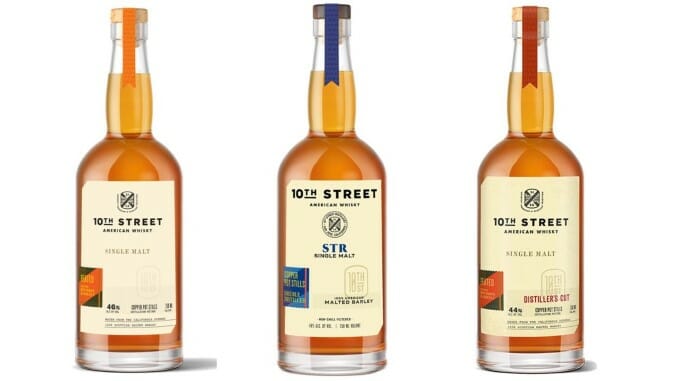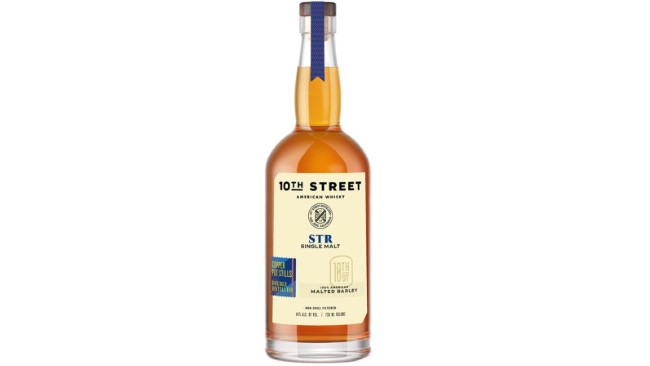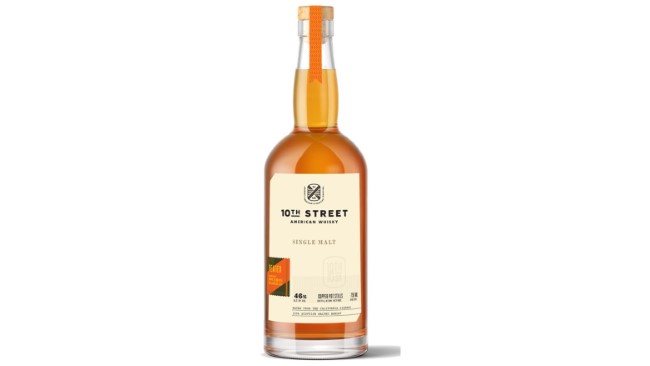Tasting: 3 Single Malt Whiskeys from San Jose’s 10th Street Distillery
Photos via 10th Street Distillery Drink Features whiskey
There’s no question that American single malt whiskey has become its own recognized, fully formed spirits style at this point, though it’s still something of an unknown value in the wider market. Regardless, there are aspects of American single malt whiskey that make it legitimately distinct, whether it’s the malt we use or the tendency of many American malt whiskey producers to age in newly charred rather than reused barrels.
To be perfectly honest, though, some of my favorite single malt whiskeys being produced in the U.S.A. are actually the ones that are being made via what we might dub “scotch-style” techniques. These techniques include the use of Scottish-made peated malt, or aging in used barrels rather than newly charred ones. Of course, even in “scotch-style” whiskeys made in America, there is still plentiful room for experimentation, such as the use of novel finishing casks that are just now getting wider exposure in the market.
All of these aspects are encapsulated by San Jose, California’s 10th Street Distillery, which focuses solely on American single malt whiskeys in a variety of substyles. Many are traditionally influenced via the use of Scottish malt (some of it peated), but they’re simultaneously combined with a high-alkaline, mineral-rich California water profile quite unlike comparable scotches. Others are crafted exclusively with American-grown malt, and aged in cutting-edge, rejuvenated casks. What you end up with, then, is a synthesis of influences.
So with that said, let’s taste three 10th Street single malts—two that are similar, and one that is quite different.
10th Street Distillery STR Single MaltABV: 46% (92 proof)
MSRP: $65
Regular readers and malt whiskey geeks should probably be expected to be familiar with “STR” barrels at this point, but as a reminder, the acronym stands for “Shaved-Toasted-Recharred.” These are wine barrels, typically European oak, that have a few millimeters of their interior shaved away before they are re-used, before being toasted and lightly charred. This effectively “reenergizes” the barrel so that it can contribute more character to a spirit more quickly, while also leaving some of the original “wine barrel” character intact. STR barrels are a fairly recent invention, but their use has been spreading across the industry, and many are favoring them as a sort of midpoint between reused whiskey barrels and virgin, newly charred oak.
10th Street’s STR Single Malt, meanwhile, is made entirely from domestic malted barley and is non-peated, unlike the two other whiskeys I’m tasting today. It’s aged entirely in STR casks.
On the nose, this one has a nice, oak-forward punch with significant roast and cocoa. I’m getting a lot of toasted oaky tones here, with some spice, Tootsie Roll-like chocolate and hints of marzipan. Further inspection gives lots of sweet malt, and perhaps a bit of coconut.
On the palate, this is actually a bit dryer than I assumed it would be from the nose, but I’m enjoying the combination of spicy cinnamon, clove, spicy and sweet oak, and significant roastiness. The toasted, recharged nature of the barrels really comes through in an assertive way here, with espresso-like roastiness and subtle sweetness. There’s some astringency to the roast, and a touch of bitterness, but doesn’t mar the overall presentation in my mind. As I return to it, I’m also getting a bit more dark fruit jam, with a slightly bitter pithiness. This is a malt for drinkers who are interested in novel oak flavors—you’d probably have to be into this particular flavor wheelhouse to appreciate it, but it works for me.
10th Street Distillery Peated Single MaltABV: 46% (92 proof)
ABV: $65
This malt, which 10th Street considers their flagship, is made with custom-peated barley from Scotland and matches the nicely elevated 92 proof of the STR malt. Being made with a significant charge of peated malt, this will obviously be an entirely different profile from the non-peated STR Single Malt.
On the nose, there’s definitely no missing the smoke—it has a warm, spicy, buffeting quality of aromatic smokiness, evoking mesquite BBQ. At the same time, I’m also getting honeycomb on the nose, along with something like stroopwafel, cocoa, and perhaps a little bit of strawberry? It’s a nice nose, to those who appreciate peated malts.
On the palate, sweet malt and smoke duke it out for supremacy, along with apple-like fruitiness, but to my taste the smoke eventually wins out. It turns rather bitter, and I feel the peat ultimately is a little overpowering here, in a way unlike even some of the Islay classics. The biggest issue to me is just how drying the smoke feels to me on the palate, leading me to feel like I need a glass of water to cleanse the palate between sips. All in all, this just strikes me as a bit unbalanced, and I feel like I’m missing out a bit on its subtleties.
10th Street Distillery Distiller’s CutABV: 44% (88 proof)
ABV: $65
This is a fascinating malt to me, because looking at the specs alone, it’s really quite similar to the Peated Single Malt above—they’re both made with peated Scottish malt, and have the same MSRP. It’s almost as if 10th Street has two different versions of their flagship product, in order to specifically highlight the differences in profile that can be achieved via the distiller’s craft, such as choosing where to make your cuts in the distillation run. Regardless, I ultimately found that this peated malt appealed to my palate in a way that the previous one did not.
On the nose, this has a nice and more even balance between fragrant wood smoke and spice, along with chocolate and cooked dark fruit. The slightly lower ABV doesn’t seem like it would affect things much, but this one does read as notably gentler and more harmonious, revealing more subtleties over time—there’s a note I like here that I would describe akin to spiced pear.
On the palate, this has a nice sweetness, a honeyed floral tone, met by slightly sour smoke. There’s some herbaceousness, as if a bundle of herbs were slowly dried over a wood fire, along with spice notes of anise and dark fruit jam. It’s absolutely still quite a peaty dram when all is said and done, but I don’t find it to dry my palate out in the same way for whatever reason. Of the two peat-forward brands from 10th Street, this one simply fits my personal tastes more neatly, and I ultimately can appreciate the fact that they have both brands, allowing consumers to make that very choice for themselves.
Jim Vorel is a Paste staff writer and resident liquor geek. You can follow him on Twitter for more drink writing.


